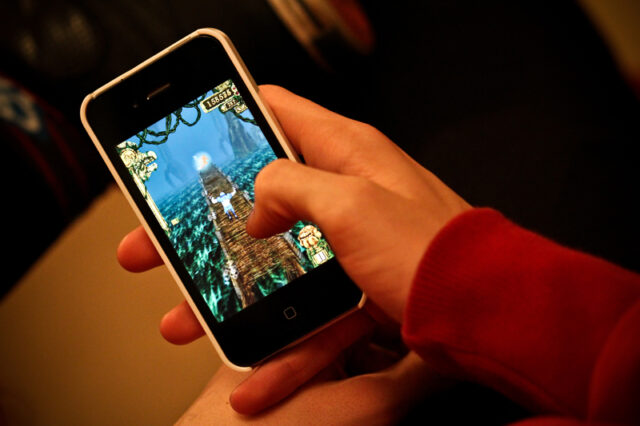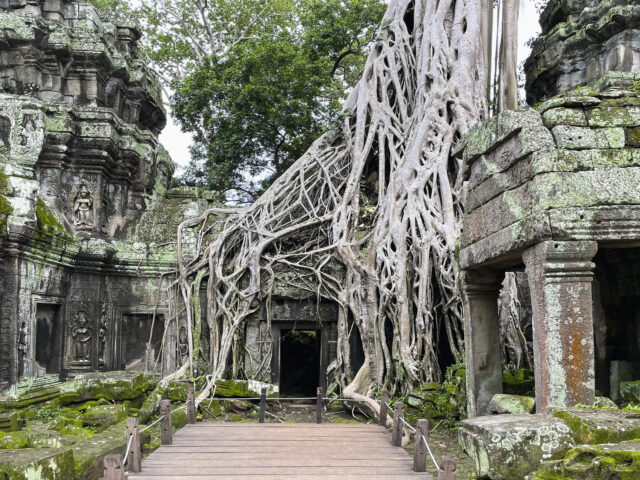There is a growing trend going around social media that pays homage to the popular mobile phone application Temple Run. Several influencers have recreated the video game in real life, running through the ancient grounds of a UNESCO World Heritage Site in Cambodia. As a result, several professionals in the fields of preservation and history have spoken out against it.
The Temple Run game is a phone app

Temple Run is a mobile game application that was developed by Imangi Studios and was released in August 2011. It is an addictive endless-running game where players control an adventurer who has stolen a cursed idol and is being chased by demonic monkeys. They must navigate the maze-like environment that is set in an ancient temple filled with various obstacles. Players must swipe to turn, jump, and slide in order to avoid the obstacles while also collecting coins. The aim of the game is to survive as long as possible.
The application significantly rose in popularity following its release, thanks to its easy mechanics and engaging theme. From hardcore gamers to those of a more casual type, Temple Run became an absolute favorite. Naturally, its popularity spurred multiple sequels and spin-offs, but the original is remembered for its unique setting in a familiar-looking ancient temple.
A ‘Temple Run’ trend is growing on social media
#NDTVWorld | Tourists Play ‘Temple Run’ In Cambodia’s Angkor Wat Temple, Sparking Outrage https://t.co/sHjMFcNVQy pic.twitter.com/UzS61J2LGi
— NDTV (@ndtv) August 29, 2024
The familiarity of the ancient temple was not lost on people. The setting within the mobile application closely resembles the ancient temple complex of Angkor Wat in Cambodia. This 12th-century complex is one of the largest religious monuments in the world, attracting millions of visitors each year to marvel at its grand scale, architecture, and historical significance.
A new trend on social media has been growing where influencers who visit the Angkor Wat try to recreate the Temple Run POV. These influencers can be seen running and jumping through the ancient grounds to the tune of various sound effects to recreate the video game in real life. With the trend spreading and growing, some people have become upset with such behavior.
The problem with recreating the video game in real life

Conservationists and historians have begun to speak out against the trend. “It’s not just potential damage to the stones by people bumping into them and falling or knocking things over — which is real,” conservation consultant Simon Warrack told Bloomberg, who first reported on the trend, “but it’s also damage to the spiritual and cultural value of the temples.”
Warrack is not alone in raising concerns about this growing trend. Andrew Brouwer, a film producer and research consultant, seconded his sentiments. He believes that “allowing people to run through the temple, jumping up and down, is a combined accident and disaster waiting to happen.” Unfortunately, the Temple Run trend is not the first time people have done strange things at the Angkor Wat temple complex.
The Temple Run trend is not the only silly thing happening at Angkor Wat

Alison Carter, an archaeology professor at the University of Oregon specializing in Southeast Asia, explained how “Tourists have been doing silly things at Angkor for years.” While she admitted she was unfamiliar with this new Temple Run trend, she explained that poor behavior had been cited before at the ancient grounds. For example, in April 2024, authorities reported that some YouTubers who visited the complex were actually abusing the monkeys at the site.
“People often forget that Angkor Wat and other Angkorian temple sites are places of living cultural heritage for Cambodian people,” Carter said. “If one wouldn’t do something in a church or a mosque, they shouldn’t do it in an Angkorian temple.” With that being said, not everyone is upset about this growing trend. Some Cambodians are sharing on social media that this could have a positive effect on tourism in the country.
More from us: The Lonely Mojave Phone Booth Is the Only One to Have Its Own Tombstone
Honestly, we’re not too sure how to feel about this just yet…
